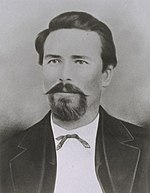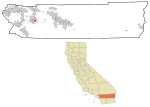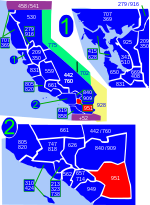Hemet, California

Hemet is a city in the San Jacinto Valley in Riverside County, California. It covers a total area of 29.3 square miles (76 km2), about half of the valley, which it shares with the neighboring city of San Jacinto. The population was 89,833 at the 2020 census. The founding of Hemet, initially called South San Jacinto, predates the formation of Riverside County. This area was then still part of San Diego County. The formation of Lake Hemet helped the city to grow and stimulated agriculture in the area. The city is known for being the home of The Ramona Pageant, California's official outdoor play set in the Spanish colonial era. Started in 1923, the play is one of the longest-running outdoor plays in the United States. Hemet has been named a Tree City USA for 20 years by the Arbor Day Foundation for its dedication to the local forest. The city is home to the Hemet Valley Medical Center, a 320-bed general hospital.
Excerpt from the Wikipedia article Hemet, California (License: CC BY-SA 3.0, Authors, Images).Hemet, California
West Florida Avenue,
Geographical coordinates (GPS) Address Phone number Website Nearby Places Show on map
Geographical coordinates (GPS)
| Latitude | Longitude |
|---|---|
| N 33.7475 ° | E -116.97194444444 ° |
Address
Hemet Museum
West Florida Avenue 100
92543
California, United States
Open on Google Maps






